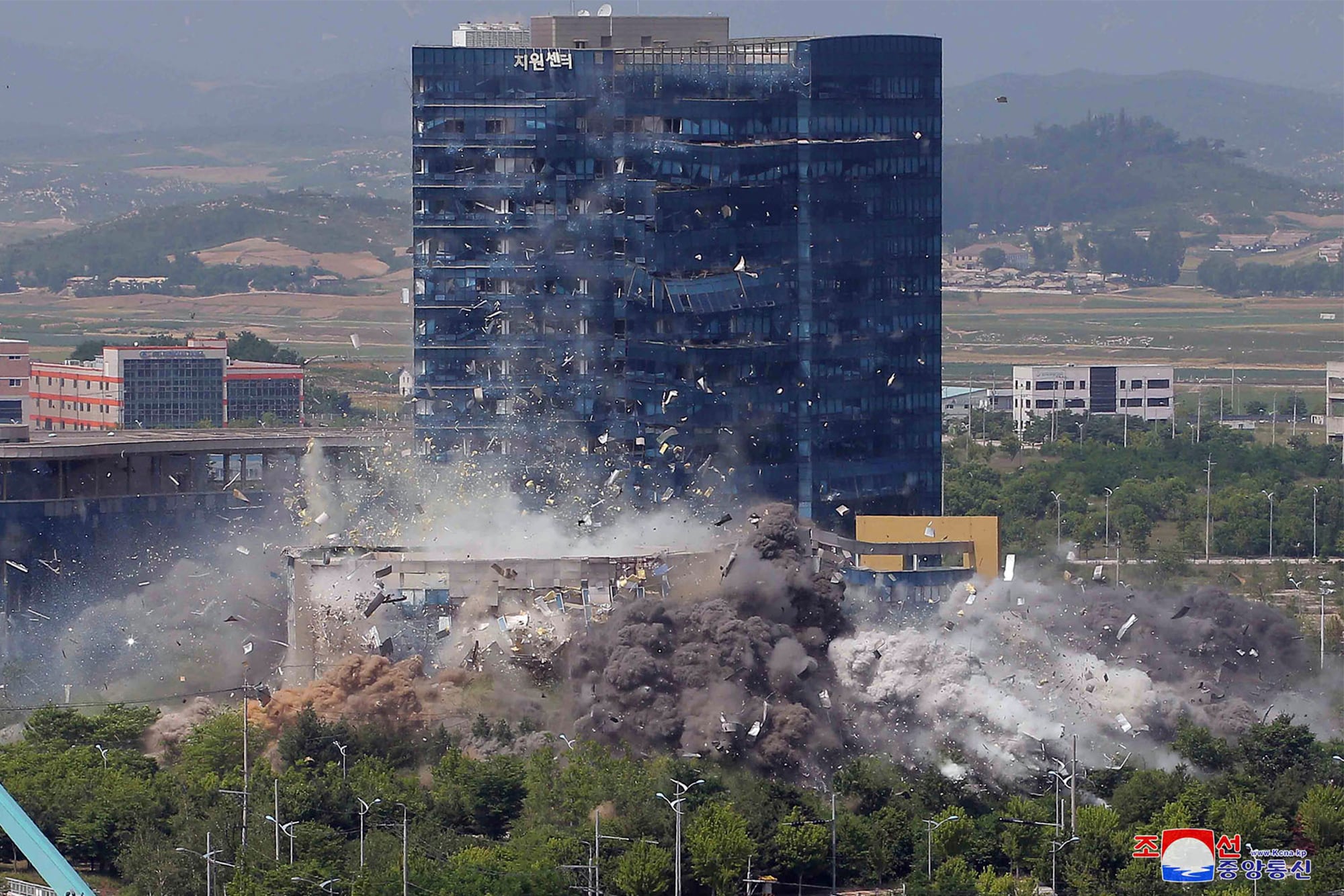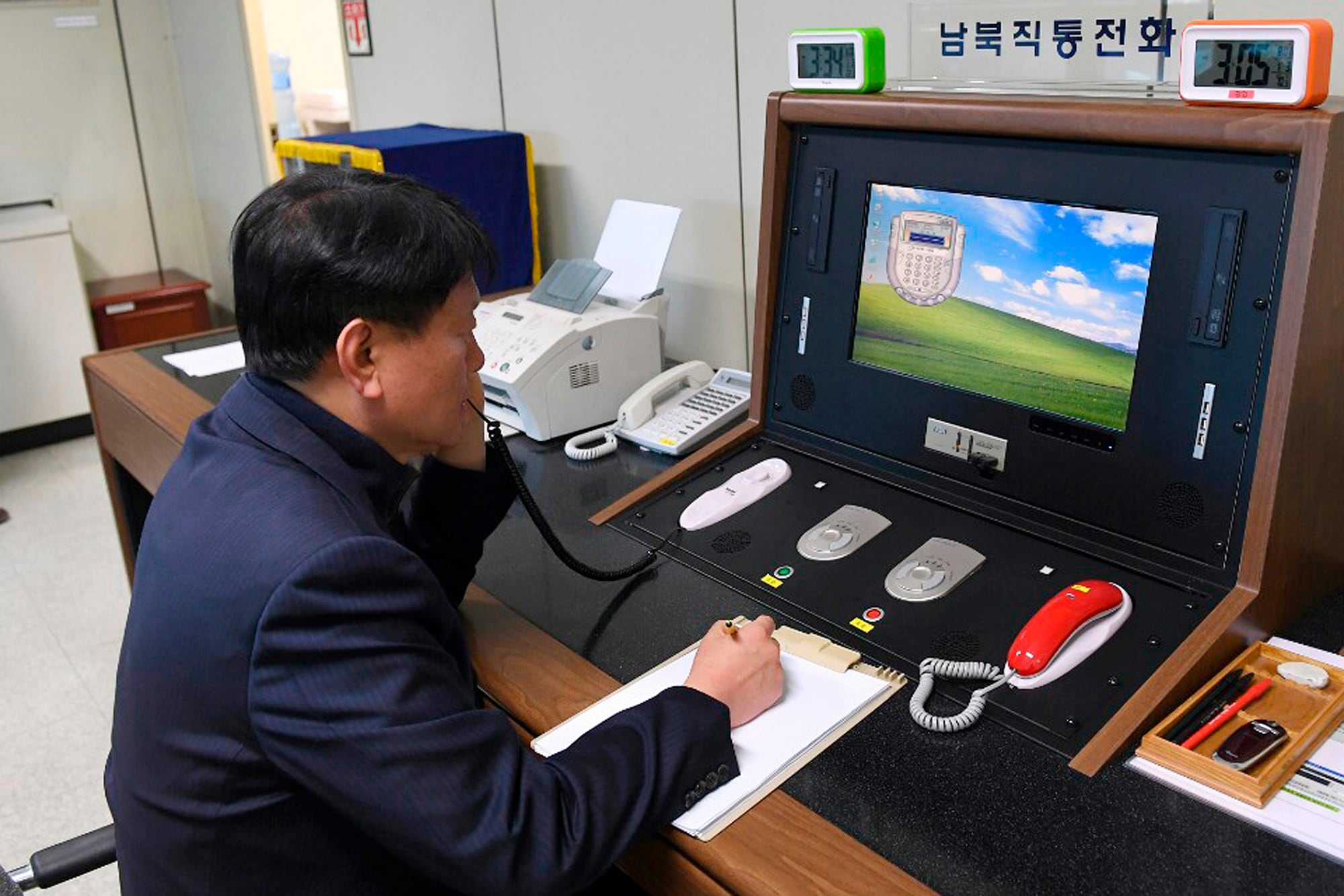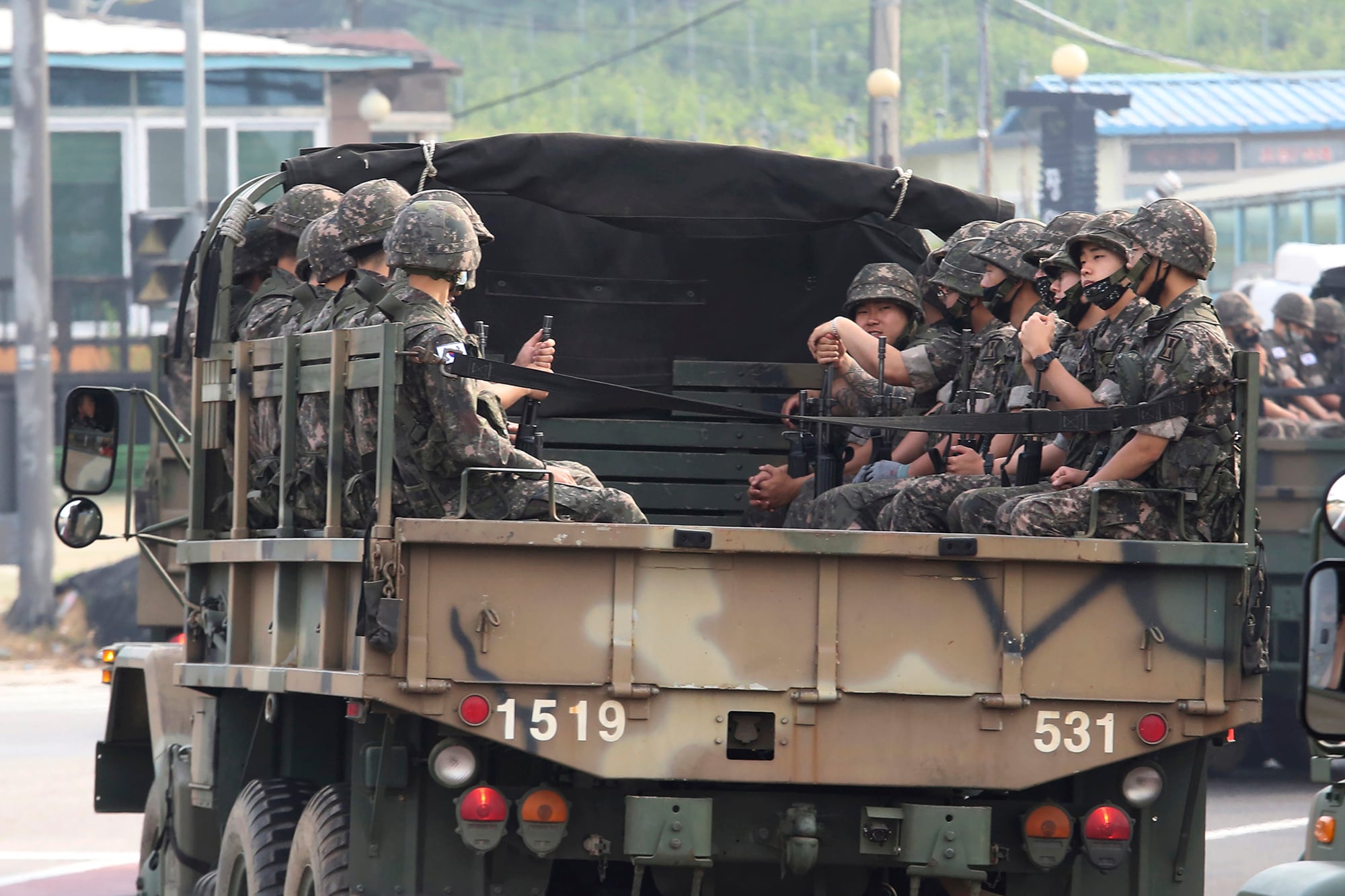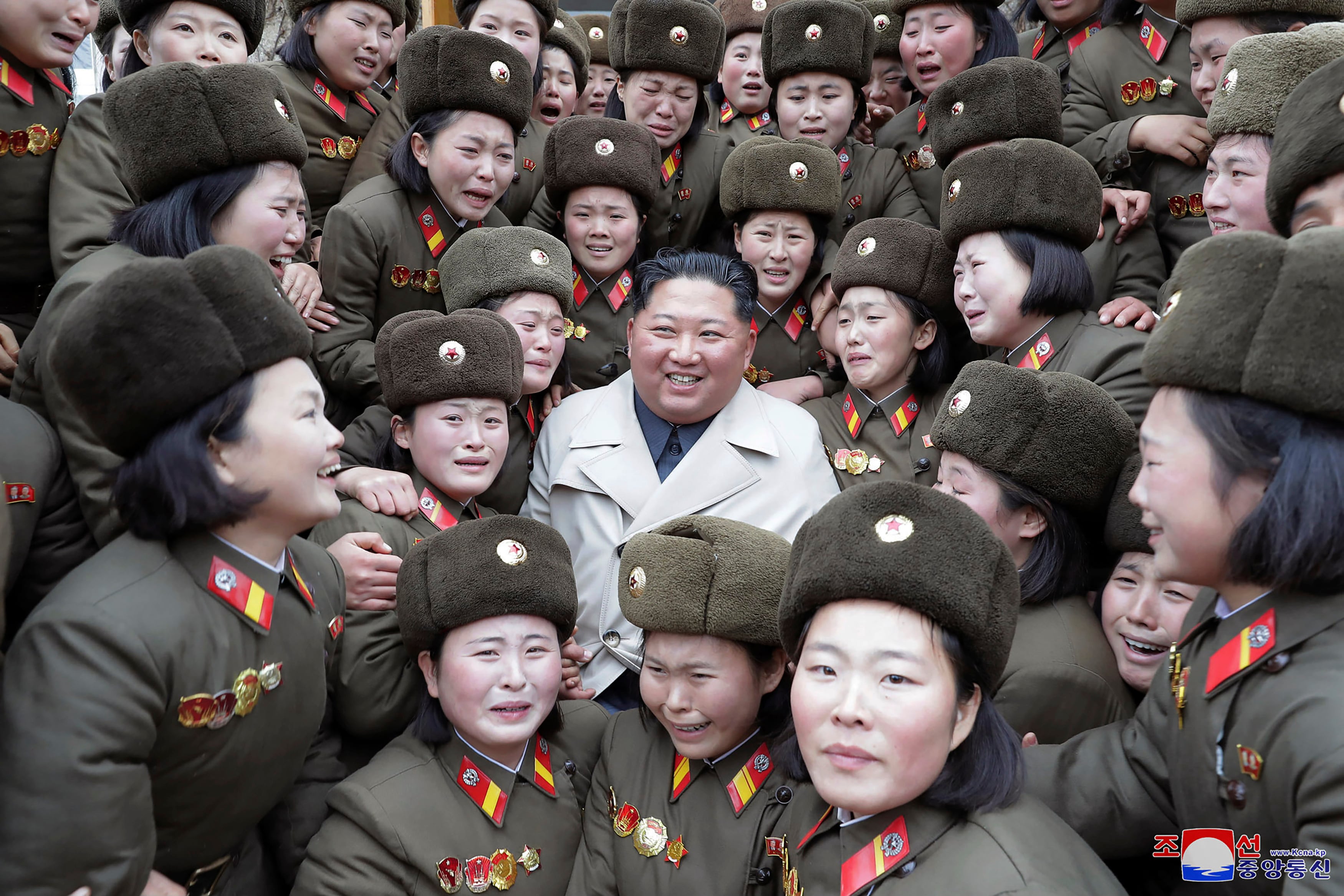SEOUL, South Korea — North Korea said Wednesday it will redeploy troops to now-shuttered inter-Korean cooperation sites, reinstall guard posts and resume military exercises at front-line areas, nullifying the landmark tension-reducing deals reached with South Korea just two years ago.
The announcement came a day after North Korea destroyed an inter-Korean liaison office in a choreographed display of anger that puts pressure on Washington and Seoul amid deadlocked nuclear diplomacy. The demolition was the most provocative act by North Korea since it entered nuclear talks in 2018, though the building in its border town of Kaesong was empty and the North had previously signaled plans to blow it up.
The North’s General Staff said military units will be deployed to the Diamond Mountain resort and the Kaesong industrial complex, both just north of the heavily fortified border. Those sites, once symbols of inter-Korean cooperation, have been shuttered for years due to inter-Korean disputes and the economic sanctions imposed on North Korea because of its nuclear program.
The North said it will resume military exercises and reestablish guard posts in border areas and and open front-line sites for flying propaganda balloons toward South Korea. It said it’ll upgrade front-line military readiness to “top-class combat duty system,” while citizens are ready to “launch the largest ever leaflet scattering with a blitz.”

These steps would end September 2018 agreements reached during inter-Korean diplomacy that were aimed at lowering military tensions at border areas.
Under those agreements, both Koreas halted live-firing exercises, removed some land mines and destroyed guard posts inside the world’s most heavily armed border. Some outside experts have said these moves undermined South Korea’s security more as the North’s nuclear weapons arsenal remain intact.
South Korea’s government didn’t immediately respond to the North Korean military statement. Seoul’s Defense Ministry had said Tuesday it would strongly deal with future provocation by North Korea.
Some outside analysts predicted North Korea would resort to provocation to wrest outside concessions because its economy has likely worsened under the persistent U.S.-led sanctions and the coronavirus pandemic. North Korea may also be frustrated because the sanctions prevent Seoul from breaking away from Washington to resume joint economic projects with Pyongyang.
RELATED

The North’s official Korean Central News Agency on Wednesday said the hard-line steps were taken to retaliate for South Korea’s failure to prevent activists from floating propaganda leaflets across the border.
The building destruction was a “reflection of the zeal of our enraged people to punish human scum who challenged the noblest dignity and prestige of our country and those who sheltered the scum, perpetrators of shuddering crime.”
It said the destruction was the first step in the retaliation and North Korea will set the intensity and timing for its additional steps while closely monitoring South Korean moves. “Under such an acute situation as now, shameless and reckless attitude and response of the South Korean authorities will lead to our tougher retaliation plans,” it said.
The liaison office, built with South Korean money at a reported cost of $8.3 million, was opened days before the 2018 tension-reduction deals were reached. It was the first such office established between the Koreas since their 1945 division.
Kim Yo Jong, the powerful sister of North Korean leader Kim Jong Un, issued a separate statement saying North Korea had rebuffed a recent offer by South Korean President Moon Jae-in to send special envoys to Pyongyang to defuse animosities.
She said Moon had offered to dispatch his National Security Director Chung Eui-yong and spy chief Suh Hun at the earliest possible date that North Korea would want. Moon’s office didn’t immediately confirm the North’s report.
Kim Yo Jong, who has spearheaded the North’s recent fiery rhetoric against South Korea, called Moon’s offer “unrealistic” and “nonsensical.”
“The (South Korean) chief executive greatly favors sending special envoys for ‘tiding over crises’ and raises preposterous proposals frequently, but he has to clearly understand that such a trick will no longer work on us,” Kim Yo Jong said. She said the current Korean crisis “can be terminated only when proper price is paid” for South Korea.

South Korea on Tuesday expressed “strong regret” over the destruction of the liaison office the two Koreas had opened in 2018 when ties flourished. The statement also warned of a stern response if North Korea takes additional steps that aggravate tensions.
North Korea’s moves have been a serious setback to Moon’s efforts at engagement. Moon champions greater reconciliation with North Korea, met Kim Jong Un three times and was a driving force behind the diplomacy between Pyongyang and Washington, including the first summit between Kim and President Donald Trump in Singapore in June 2018.
RELATED

Inter-Korean relations have been strained since the second Kim-Trump summit in early 2019 fell apart due to wrangling over the sanctions.
Moon and Kim, after the first of their three 2018 summits, agreed to stop all forms of hostile acts against each other, including leafleting campaigns. But the agreement doesn’t clearly say civilian leafleting should also be banned.
Jang Kum Chol, director of the inter-Korean affairs department at North Korea’s ruling party, said Wednesday that Seoul is responsible for the building’s destruction because activists and North Korean defectors in South Korea continued launching leaflets.
“Therefore, there can be no exchange or exchange with (the South’s) government. No words will be exchanged at all,” Jang said.




